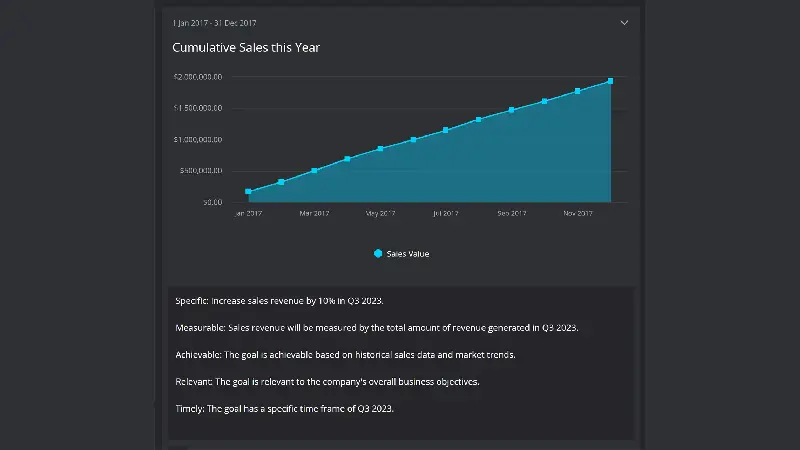It's always been a fad world. But with the advent of the internet and surge in social media, their traditionally slow adoption rate has found new fertile ground for accelerated growth. From 'waiting room magazines' desperately trying to drive low carb diets or the '6 pack in a week exercise plan' – we're now confronted by a tsunami of crazes—everything from celebrity vloggers, Cryptocurrencies, Virtual Reality, and fidget spinners.
And the world of performance management isn't immune. They even have their very own type of fad. These come in the form of fanciful methodologies. Almost universally advertising seductive claims, laced with the latest buzzwords, all neatly packaged and rubber-stamped by a 'guru' - complete with a cast iron guarantee of business growth (if only you buy the book and implement the 'mega methodology').
But not all of these 'fads' are fanciful USPs. Some are grounded on tested principles, while others are extensions of old classics. One such evolution is that of SMARTER KPIs.
In this article:
- What are SMART KPIs?
- The history of SMART KPIs
- Where are SMART KPIs used?
- What's the difference between KPIs and SMART KPIs?
- Smart KPI Example
- How best to implement SMART KPIs?
- Getting even SMARTER KPIs
- How SMARTER objectives help in a real-world Example
- Final Thoughts
What are SMART KPIs?
To understand SMARTER KPIs in the context of performance tracking, it's best to begin with understanding the first iteration of this methodology, SMART.
The acronym "SMART" stands for Specific, Measurable, Achievable, Relevant, and Time-bound. In order to be effective, KPIs must meet each of these criteria.
- Specific: SMART KPIs should provide transparent information about what needs to be done or achieved and how it will be measured.
- Measurable: It is essential to have a metric that can tell you whether the goal was achieved or not. This could include numbers such as sales figures or customer satisfaction ratings.
- Achievable: The goals set should be realistic and achievable within an appropriate timeframe. Setting too high targets may lead to failure and frustration while setting them too low could mean missing out on potential opportunities.
- Relevant: KPIs should be relevant to the overall business objectives and reflect the company's core values. This could include customer satisfaction, employee engagement, or cost reduction goals.
- Time-bound: SMART KPIs must have an end date by which they should be achieved in order to keep the team focused and motivated.
Using this SMART process for defining your KPIs can help ensure that the KPIs on your KPI Dashboards or KPI Reports are fit for purpose, relevant, and ultimately successful.
The history of SMART KPIs
SMART KPIs have been around since the early 1980s and were first introduced by Peter Drucker in his book "Managing for Results". Since then, they have become a widely accepted and implemented tool within businesses across all sectors.
Where are SMART KPIs used?
SMART KPIs are used in various businesses and organizations to track progress, hold people accountable and measure success. They are commonly used in marketing, customer service, finance, human resources, and product development.
What's the Difference between KPIs and SMART KPIs?
KPIs are metrics used to measure performance, while SMART KPIs add the additional criteria of being specific, measurable, achievable, relevant, and time-bound. This provides a more structured approach for setting goals and tracking progress.
Smart KPI Example
Here is an example of a SMART KPI for a sales team:
- Specific: Increase sales revenue by 10% in Q3 2023.
- Measurable: Sales revenue will be measured by the total amount of revenue generated in Q3 2023.
- Achievable: The goal is achievable based on historical sales data and market trends.
- Relevant: The goal is relevant to the company's overall business objectives.
- Timely: The goal has a specific time frame of Q3 2023.

How best to implement SMART KPIs?
The key to a successful implementation of SMART KPIs is good planning and communication. Ensure that everyone involved clearly understands what needs to be done and how it will contribute to overall success. Then create a timeline for when specific targets need to be met and ensure that regular reviews are carried out to track progress.
Finally, ensure that any changes or adjustments needed due to changing conditions are communicated as quickly as possible and reviewed regularly. This will help ensure that the team continues to work towards the same goal and can adjust their strategies if needed.
By tracking the right KPIs, businesses can focus on what matters most and make more informed decisions. SMART KPIs are an invaluable tool for measuring progress and staying competitive in today's world.
Getting even SMARTER KPIs
Progress is often made by standing on the shoulders of giants. Or by adding a couple of additional criteria to the SMART methodology:
- Evaluate - As business goals change, it's prudent to evaluate whether the KPI is providing the correct measurements - or is still strategically aligned to its intended purpose.
- Revise - Occasionally, evaluations will pinpoint the need to revise the KPI.

How SMARTER objectives help in a real-world Example
A hugely important KPI that companies with subscription models should be monitoring and looking to improve is customer retention rate (CRR). It's a critical measure in being able to sustain growth. Let's say an identified business objective would be to reduce the amount of paying customers that cancel. The goal would be to minimize cancellations or increase retention by 10% over the next 12 months.
So, using the SMARTER criteria, how would this look?
- Specific: To reduce the number of cancellations and increase client retention.
- Measurable: The goal has quantifiable numbers such as the number of customers at the start of the period (A), the number acquired during that period(B), and the number at the end of that period (C), Customer Retention Rate = ((C - B) / A) * 100.
- Achievable: Can we achieve this? – Its plausible that with some process changes, incentives and customer service improvements, the CRR can go from 6% to 10%.
- Relevant: This is certainly relevant as CRR for subscription models is a fundamental measurement that indicates growth or stagnation.
- Timely: Changes to the process will take time. A 12-month progression to a 10% retention rate has various factors that will need time to implement. So, a lengthy period is more realistic.
- Evaluate: During the period, we will monitor this quarterly as different incentives are introduced.
- Revise: We will revise this KPI if and when the goal appears too optimistic or pessimistic – or if any other external factors outside our influence affect the goal target.
Final Thoughts
Using SMART criteria to design KPIs for your dashboards can help you create objectives and goals in a structured way, minimizing mistakes. This approach also makes measuring and performance monitoring more accurate and relevant. The result? A clearer understanding of your goals and better decision-making.

by Stuart Kinsey
Stuart Kinsey writes on Key Performance Indicators, Dashboards, Marketing, and Business Strategy. He is a co-founder of SimpleKPI and has worked in creative and analytical services for over 25 years. He believes embracing KPIs and visualizing performance is essential for any organization to strive and grow.
